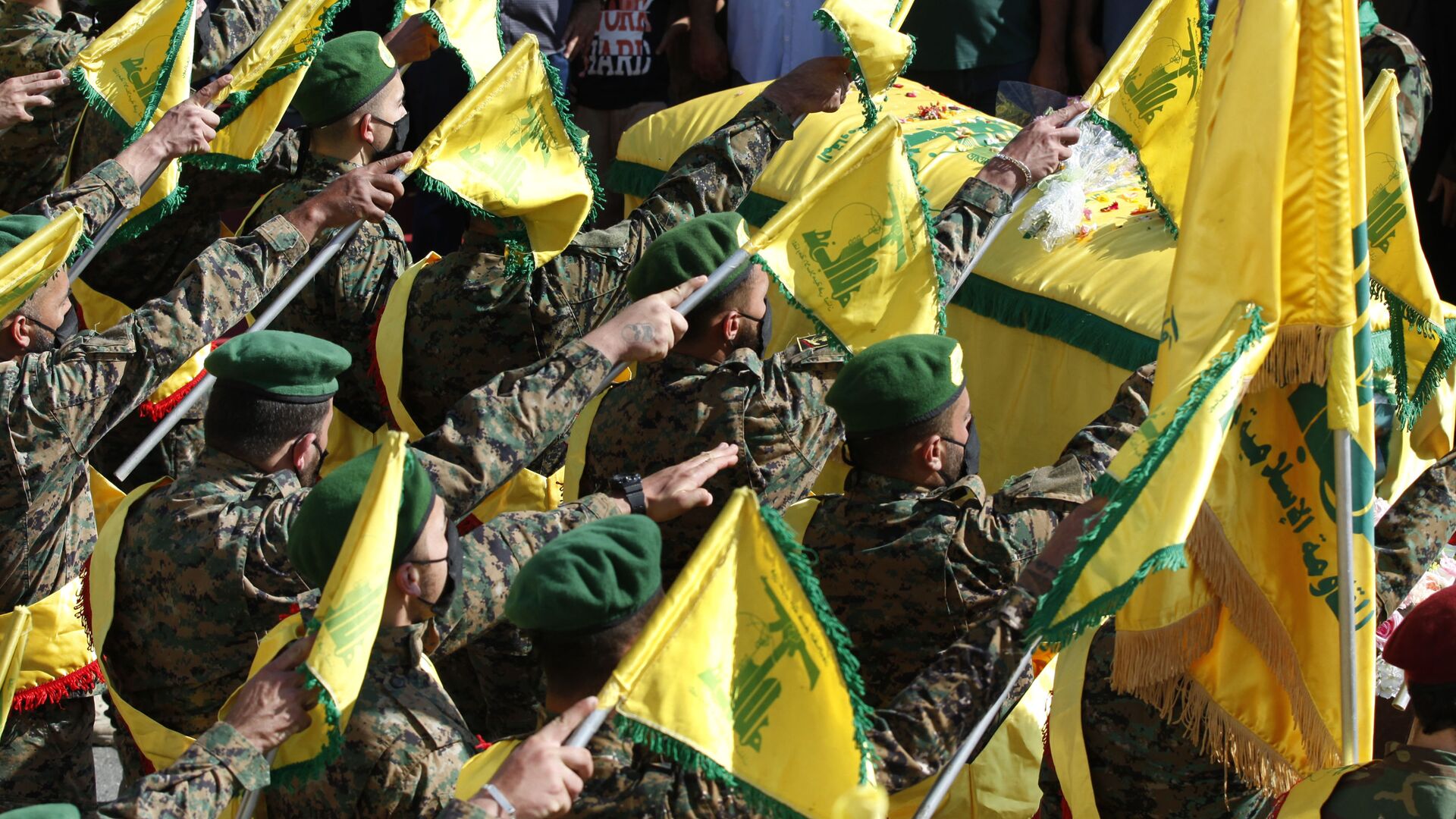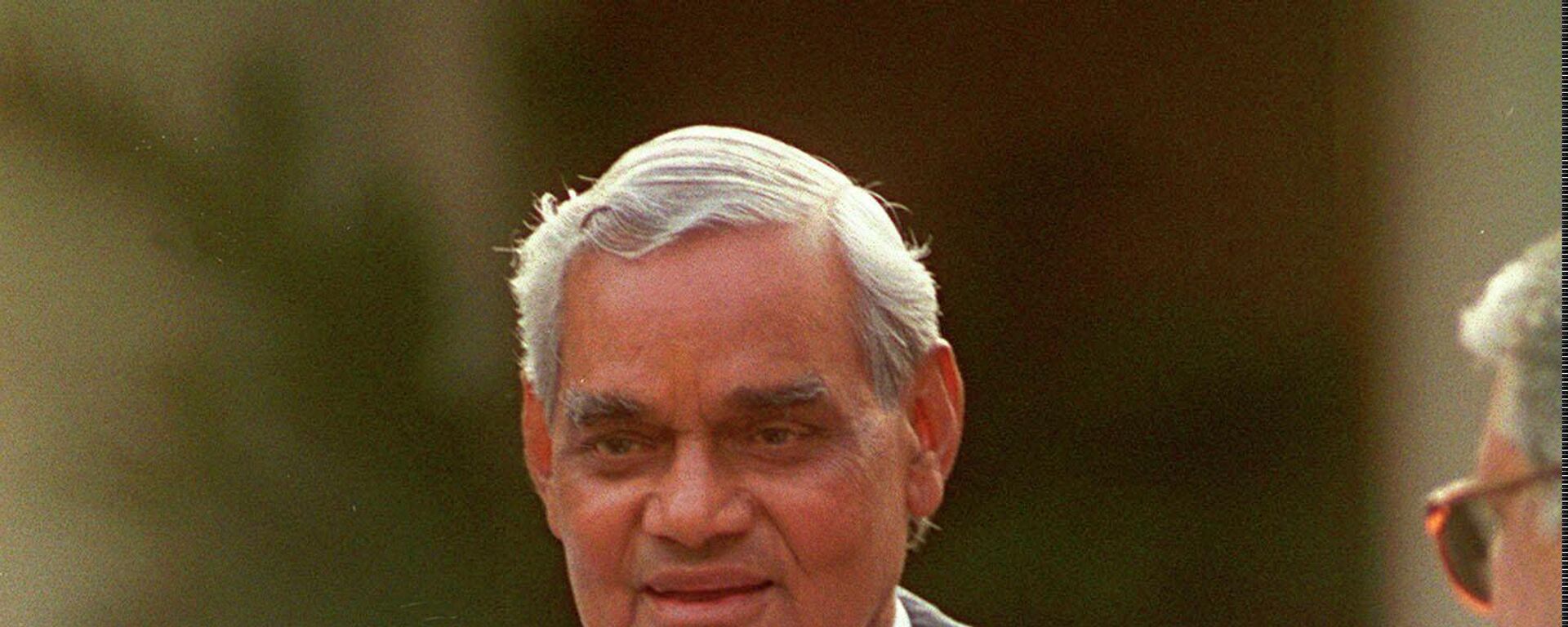https://sputniknews.in/20231022/how-formidable-is-hezbollah-4918091.html
How Formidable is Hezbollah?
How Formidable is Hezbollah?
Sputnik India
Lebanese Shia movement Hezbollah is considered as one of the most formidable movements in the Middle East. According to some analysts, Hesbollah has "a larger arsenal of artillery than most nations enjoy."
2023-10-22T22:05+0530
2023-10-22T22:05+0530
2023-10-23T11:08+0530
hamas
hezbollah
israel defense forces (idf)
israel
united kingdom (uk)
the united nations (un)
league of arab states (las)
saudi arabia
syrian arab red crescent (sarc)
arabian sea
https://cdn1.img.sputniknews.in/img/07e7/0a/13/4951659_0:160:3073:1888_1920x0_80_0_0_c4d6f31df137190ed71e7ac9370dd84e.jpg
Lebanese Shia movement Hezbollah is considered one of the most formidable militant movements in the Middle East. According to some analysts, Hezbollah has "a larger arsenal of artillery than most nations enjoy".As Israeli forces prepare for an impending ground assault on the Gaza Strip, Hezbollah is hovering in Lebanon just across Israel’s northern border.Hezbollah launched guided rockets and artillery shells into Israel hours after Hamas' attack on October 7, which was responded to with a torrent of artillery fire from Israel. The tit-for-tat battle has persisted ever since.After Palestinian officials said that hundreds of civilians were killed in an alleged Israeli strike on a hospital in Gaza, Hezbollah in Lebanon condemned the incident and called for "a day of unprecedented anger" on Wednesday.Ideological Evolution: How Did Hezbollah Rise to Prominence?Hezbollah was born during the Lebanese Civil War.Under the banner of the fervent Islamist philosophy that emerged from the Iranian Revolution, its warriors fought for their "own justice".The founding ideologies of Hezbollah focused on the destruction of Israel, gaining more sway over the Lebanese political system, and establishing an Islamic theocracy in Lebanon.Although Hezbollah—also referred to as Hizbollah, Hizballah, and other variants—has undergone significant changes over the years, the organisation still views Israel as its main foe, and its adherence to the idea of the rule of law (velayat-e faqih) has remained at the centre of its ideology—albeit with some ideological changes.Following the Taif Agreement in 1989, Hezbollah's environment saw a dramatic transformation: the political environment shifted from total anarchy to a centralised government shared by all major Lebanese confessions.The alternative for Hezbollah was clear: either participate in politics while opposing a unanimity in favour of a new beginning or participate in politics while profiting from its resistance to Israeli occupation.Hezbollah initially disapproved of the Taif agreement due to a "failed reform" that scarcely altered the National Pact that was signed in 1943 and increased Shia marginalisation.In addition, Hezbollah did not just oppose the Taif Agreement because it was regarded as prejudiced and flawed, but because the group considered it as a US project.In 1992, Hezbollah took part in parliamentary elections. The group's participation in the first post-civil war election signalled a new era in Hezbollah's history and a change from a purely revolutionary pan-Islamic period to a more pragmatic and Lebanese organisation.In stark contrast to its earlier refusal to identify as a Lebanese party, Hezbollah started to introduce itself as a party that represents all Lebanese people, rather than as an Islamist organisation.Hezbollah candidates won 12 of the 128 seats in the parliament in 1992 and nine in 1996.How Strong is Hezbollah?Hezbollah says it can strike any location in Israel with its arsenal of weapons, which includes drones and precision missiles. Hezbollah's leader Sayyed Hassan Nasrallah estimated that the organisation had 100,000 fighters in 2021.Hezbollah showed its military prowess in its five-week conflict with Israel in 2006. During the conflict, Hezbollah launched tens of thousands of rockets into Israel.In 2020, the International Institute for Strategic Studies projected that Hezbollah had up to 20,000 active combatants and about 20,000 reservists, as well as a stockpile of small arms, tanks, drones, and several long-range rockets.Refashioning IslamismThe leaders of Hezbollah recognised the importance of support in the conflict with Israel, so modifications had to be made to their group's philosophy. As a result, they looked at various "conceptions of jihad itself, and interpretations as to when coexistence with a non-Muslim state might have to occur.'Due to the acceptance of national distinctions, some experts have concluded that the idea of velayat-e faqih has evolved and is now more open-ended.First Arab VictoryIsrael's 22-year occupation came to an end on May 24, 2000, when the last Israeli troops withdrew from Lebanon. Additionally, the South Lebanon Army evacuated all of its military installations and stockpiles, and the Israeli Air Force destroyed all of the heavier weapons.The first Arab triumph in the decades-long Arab-Israeli conflict was due to Hezbollah’s resistance.Therefore, from May to June 2000, the Lebanese government and the United Nations made an attempt to determine whether the Israeli retreat was complete. The remaining Lebanese-Israeli border was referred to as the "blue line".Is Hezbollah an Ally of Hamas?Although Hezbollah and Hamas are different entities, they both have the same goal of armed resistance against Israel.While Hamas is a Palestinian movement, Hezbollah is a Lebanese organisation. The First Intifada was a Palestinian uprising against Israel's control of Palestinian lands. Since winning elections in 2006, Hamas has political power over the Gaza Strip.This unfolded after Hezbollah's deputy leader, Naim Qassem, stated that the organisation was constantly monitoring developments between Hamas and Israel.
https://sputniknews.in/20231017/what-atal-bihari-vajpayee-said-on-israel-palestine-conflict-4887063.html
israel
united kingdom (uk)
saudi arabia
arabian sea
persian gulf (arabian gulf)
iran
iraq
Sputnik India
feedback.hindi@sputniknews.com
+74956456601
MIA „Rossiya Segodnya“
2023
Swapna Nair
https://cdn1.img.sputniknews.in/img/07e7/09/12/4320104_0:0:681:681_100x100_80_0_0_ca8a7d4d582609272840ffdd1cde7278.jpg
Swapna Nair
https://cdn1.img.sputniknews.in/img/07e7/09/12/4320104_0:0:681:681_100x100_80_0_0_ca8a7d4d582609272840ffdd1cde7278.jpg
News
en_IN
Sputnik India
feedback.hindi@sputniknews.com
+74956456601
MIA „Rossiya Segodnya“
Sputnik India
feedback.hindi@sputniknews.com
+74956456601
MIA „Rossiya Segodnya“
Swapna Nair
https://cdn1.img.sputniknews.in/img/07e7/09/12/4320104_0:0:681:681_100x100_80_0_0_ca8a7d4d582609272840ffdd1cde7278.jpg
hezbollah, israeli forces, ground assault, gaza strip, lebanon, heinous attack, palestinian, israeli airstrike, the united states, hezbollah’s ideology, civil war, qara qoyunlu (black sheep) shia, iranian revolution, lebanese political system, syrian dominance in lebanon, taif agreement, national pact, pan-islamic, naim qassim, second-in command of hezbollah, arab–israeli conflict, un resolution, syrian golan heights, israel's institute for national security studies, palestinian lands
hezbollah, israeli forces, ground assault, gaza strip, lebanon, heinous attack, palestinian, israeli airstrike, the united states, hezbollah’s ideology, civil war, qara qoyunlu (black sheep) shia, iranian revolution, lebanese political system, syrian dominance in lebanon, taif agreement, national pact, pan-islamic, naim qassim, second-in command of hezbollah, arab–israeli conflict, un resolution, syrian golan heights, israel's institute for national security studies, palestinian lands
How Formidable is Hezbollah?
22:05 22.10.2023 (Updated: 11:08 23.10.2023) Amid the Israel-Hamas war, Hezbollah has exchanged fire across Israel's northern border for days with the Israel Defence Forces - the bloodiest escalation since the major conflict in 2006.
Lebanese Shia movement Hezbollah is considered one of the most formidable militant movements in the Middle East. According to some analysts, Hezbollah has "a larger arsenal of artillery than most nations enjoy".
As Israeli forces prepare for an impending ground assault on the Gaza Strip, Hezbollah is hovering in Lebanon just across Israel’s northern border.
Hezbollah launched guided rockets and artillery shells into Israel hours after Hamas' attack on October 7, which was responded to with a
torrent of artillery fire from Israel. The tit-for-tat battle has persisted ever since.
After Palestinian officials said that hundreds of civilians were killed in an alleged Israeli strike on a hospital in Gaza, Hezbollah in Lebanon condemned the incident and called for "a day of unprecedented anger" on Wednesday.
In a statement slamming what it claimed to be an Israeli airstrike, Hezbollah said: "The attack reveals the true criminal face of this entity and its sponsor… the United States, which bears direct and complete responsibility for this massacre".
Ideological Evolution: How Did Hezbollah Rise to Prominence?
Hezbollah was born during the Lebanese Civil War.
Under the banner of the fervent Islamist philosophy that emerged from the Iranian Revolution, its warriors fought for their "own justice".
However, imposed pragmatism replaced ideological rigour over time. Hezbollah set out to accomplish several objectives from the moment it was legally established in 1985, but its primary objectives were ultimately changed.
The founding ideologies of Hezbollah focused on the
destruction of Israel, gaining more sway over the Lebanese political system, and establishing an Islamic theocracy in Lebanon.
Although Hezbollah—also referred to as Hizbollah, Hizballah, and other variants—has undergone significant changes over the years, the organisation still views Israel as its main foe, and its adherence to the idea of the rule of law (velayat-e faqih) has remained at the centre of its ideology—albeit with some ideological changes.
Following the Taif Agreement in 1989, Hezbollah's environment saw a dramatic transformation: the political environment shifted from total anarchy to a centralised government shared by all major Lebanese confessions.
The alternative for Hezbollah was clear: either
participate in politics while opposing a unanimity in favour of a new beginning or participate in politics while profiting from its resistance to Israeli occupation.
Hezbollah initially disapproved of the Taif agreement due to a "failed reform" that scarcely altered the National Pact that was signed in 1943 and increased Shia marginalisation.
Hezbollah expressed its disapproval of the agreement in an official statement, calling it "a conspiracy that promotes Israeli control of Lebanese territory and seeks to continue the oppression of Muslims in Lebanon".
In addition, Hezbollah did not just oppose the Taif Agreement because it was regarded as
prejudiced and flawed, but because the group considered it as a US project.
In 1992, Hezbollah took part in parliamentary elections. The group's participation in the first post-civil war election signalled a new era in Hezbollah's history and a change from a purely revolutionary pan-Islamic period to a more pragmatic and
Lebanese organisation.
In stark contrast to its earlier refusal to identify as a Lebanese party, Hezbollah started to introduce itself as a party that represents all Lebanese people, rather than as an Islamist organisation.
"Elections are numbers and alliances, and we seek to attract any votes and join with whoever benefits us”, Naim Qassim, the second-in-command of Hezbollah, once said.
Hezbollah candidates won 12 of the 128 seats in the parliament in 1992 and nine in 1996.
Hezbollah says it can strike any location in Israel with its arsenal of weapons, which includes drones and precision missiles. Hezbollah's leader Sayyed Hassan Nasrallah estimated that the organisation had 100,000 fighters in 2021.
Hezbollah showed its military prowess in its
five-week conflict with Israel in 2006. During the conflict, Hezbollah launched tens of
thousands of rockets into Israel.
In 2020, the International Institute for
Strategic Studies projected that Hezbollah had up to 20,000 active combatants and about 20,000 reservists, as well as a stockpile of small arms, tanks, drones, and several long-range rockets.
Hezbollah, according to analyst and retired Brigadier General Assaf Orion of Israel's Institute for National Security Studies, has "a larger arsenal of artillery than most nations enjoy", and according to a 2018 report from the Centre for Strategic and International Studies, it is "the world's most heavily armed non-state actor".
The leaders of
Hezbollah recognised the importance of support in the conflict with Israel, so modifications had to be made to their group's philosophy. As a result, they looked at various "conceptions of jihad itself, and interpretations as to when coexistence with a non-Muslim state might have to occur.'
Hezbollah created the Lebanese Brigades of Resistance to the Israeli Occupation in 1997, which include various Lebanese sects fighting alongside the Islamic Resistance forces, to support its new strategy.
Due to the acceptance of national distinctions, some experts have concluded that the idea of velayat-e faqih has evolved and is now more open-ended.
Israel's 22-year occupation came to an end on May 24, 2000, when the last Israeli troops withdrew from Lebanon. Additionally, the South Lebanon Army evacuated all of its military installations and stockpiles, and the
Israeli Air Force destroyed all of the heavier weapons.
The first Arab triumph in the decades-long Arab-Israeli conflict was due to Hezbollah’s resistance.
Meanwhile, the UN issued Resolution 425 demanding the complete and unconditional withdrawal of Israel. Israeli troops remained in the Shebaa Farms because they considered it part of the Syrian Golan Heights.
Therefore, from May to June 2000, the Lebanese government and the
United Nations made an attempt to determine whether the Israeli retreat was complete. The remaining Lebanese-Israeli border was referred to as the "blue line".
Is Hezbollah an Ally of Hamas?
Although Hezbollah and Hamas are different entities, they both have the same goal of armed resistance against Israel.
While Hamas is a Palestinian movement, Hezbollah is a Lebanese organisation. The First Intifada was a Palestinian uprising against Israel's control of Palestinian lands. Since winning elections in 2006, Hamas has political power over the
Gaza Strip.
Earlier, on Saturday, the Israel Defence Forces claimed they had attacked a Hezbollah position in southern Lebanon in reaction to the "infiltration of unidentified aerial objects into Israel".
This unfolded after Hezbollah's deputy leader, Naim Qassem, stated that the organisation was constantly monitoring developments
between Hamas and Israel.Regarding Arab nations trying to normalise relations with Israel, Hezbollah's statement suggested that it was a "decisive response to Israel's continued occupation and a message to those seeking normalisation with Israel".



